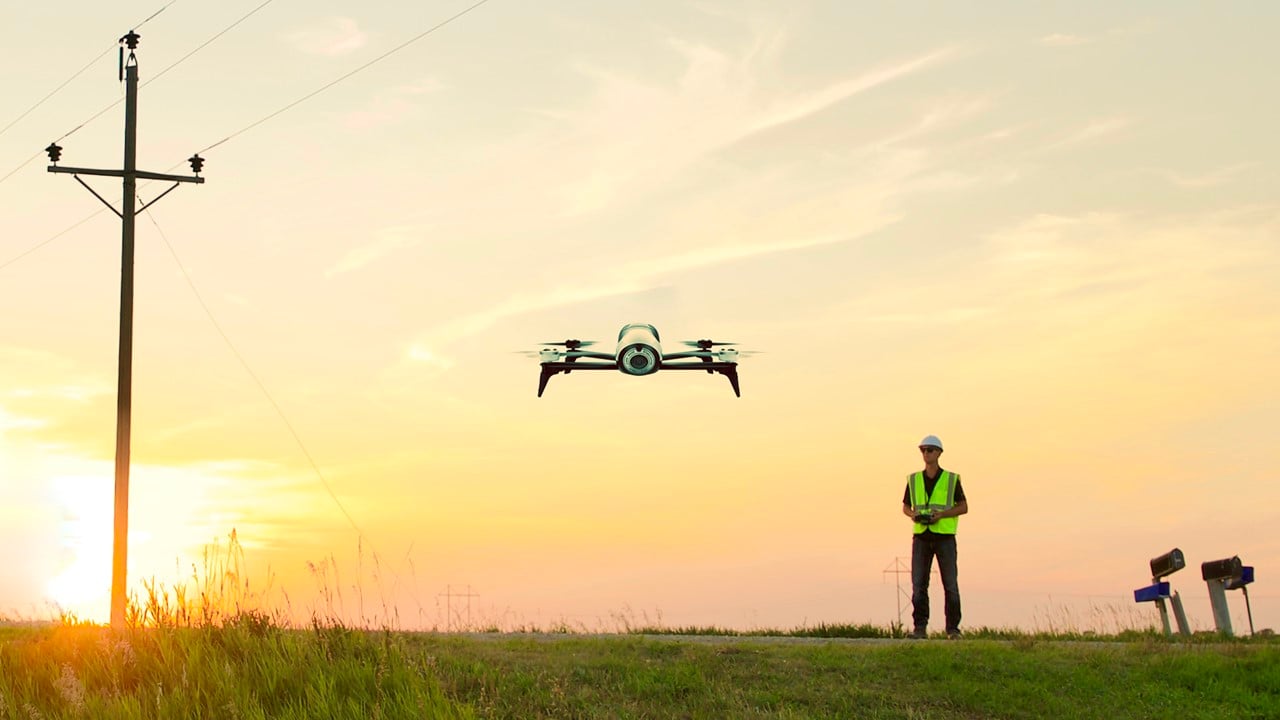
It might sound like science fiction but drones will soon take over the inspection of your power grid. Equipped with intelligent software and sensors, drones will identify deviations on grid masts, transmission lines, and other critical elements.
Drones are nothing new. Not even to the energy sector. Already in 2015, General Electric, in collaboration with various utilities, used fixed-wing drones to inspect power lines in the US and abroad, cutting both inspection time and cost compared to traditional foot or helicopter inspections.
The use of drones in power grid operations is about to expand even further. Drones will enable more efficient data analysis and predict future events as well as their consequences, enabling you to streamline, plan and manage your grid operations in new ways. It is important to note, however, that drones will not replace your existing workforce. Their role will be to provide your operations and maintenance crews with new and valuable insights that will ease and improve their day-to-day decision-making.
Read also our guide to efficient power grid operations for the digital age.
New, safer inspection methods
Today's power grid inspection involves low-flying helicopters and people climbing in masts – both of which are inherently dangerous. According to T&D World, utility line work is one of the top ten most dangerous jobs in America with around 30 to 50 workers in every 100 000 killed on the job every year.
Drones, specially constructed for the energy sector, will be programmed to recognize the topology in the power grid and operate independently on pre-defined routes. With the help of sensor technology, machine learning technology, and intelligent software, drones will be able to identify anything from missing components and defective isolators to rotting wooden masts and woodpecker holes. And they will do it automatically.
At the other end, drones will produce a work order with the help of a fleet management system to guide the nearest available inspector to the correct spot, equipped with the appropriate tools. Drones are thus faster, safer and cheaper.
More efficient data analysis
Anyone involved in the analysis part of an inspection process knows it involves handling and working with a massive amount of data. Today, this a manual procedure. In the future, drones equipped with intelligent software will replace these costly and time-consuming processes and reduce the risk of human errors.
With the help of Deep Learning, a system that learns to recognize digital representations of data such as photographs, you will be able to analyze multiple data streams from drones. The efficiency gain is significant: Instead of employees wading through massive amounts of unmanageable data, drone software will recognize individual objects such as isolators in your power grid and link them to an existing component register.
Instead of learning about potential problems three months after the inspection, your staff will have access to this information almost immediately.
Predicting future events
Perhaps the most interesting opportunity emerging with the use of drones is predicting future events. With access to analyzed time series data, you can not only examine what has happened, you can predict what will happen.
Many power grid operators we know of, at least here at home in Norway, spend much time worrying about vegetation close to their power grids. A key to controlling this is to gain an overview of the natural surroundings and connect this information with other types of relevant data. For example:
Future drones will have sensors able to recognize tree rot. If the drone, through data collection and analysis, has registered a rotten tree standing dangerously close to your power lines and you know there is a storm on its way, you can proactively dispatch a crew to neutralize the present danger.
When will it happen?
Even though we use phrases like "the drones of the future", they are not science fiction. They are entering the market as we speak. The drone industry is flying high, and a large-scale roll-out of autonomous service drones is just around the corner. Many of the opportunities outlined here will be realized already in 2017.
What you need to remember though, is that a drone is not merely a drone. A drone in and by itself will not revolutionize your grid operations. It’s their ability to collect and analyze massive amounts of data through built-in intelligent software, combined with ideal weight and effective flight attribution, that are crucial. New IT solutions capable of gathering and analyzing massive amounts of data must be implemented in the intelligent drone’s “brain.” The most important data will then be sent to the operator who will decide whether to act. In this way, drones will soon become a ground-breaking tool for utility infrastructure operations and maintenance.



.png?width=250&height=64&name=Grid%20Vision%20logo(250%20x%2064%20px).png)